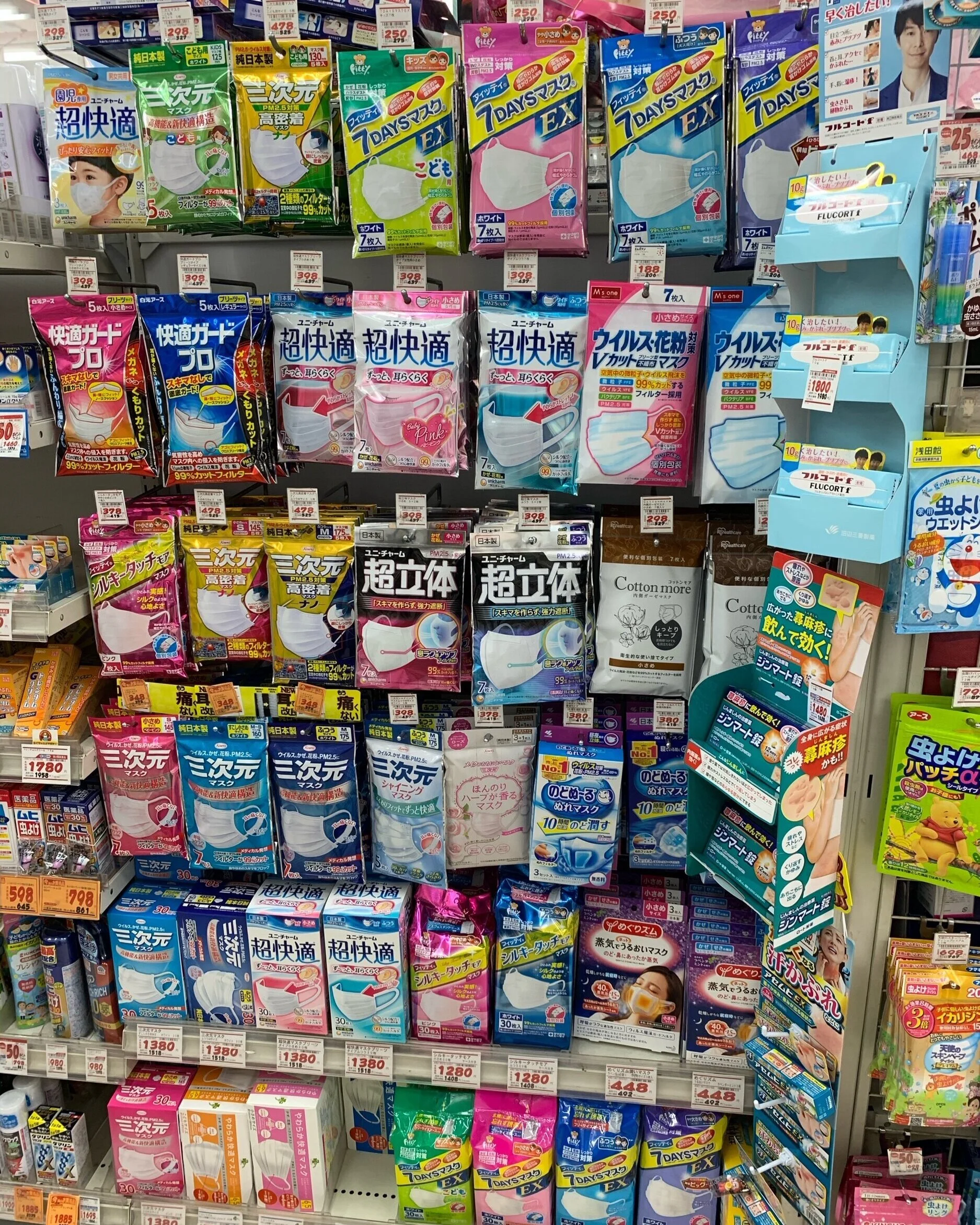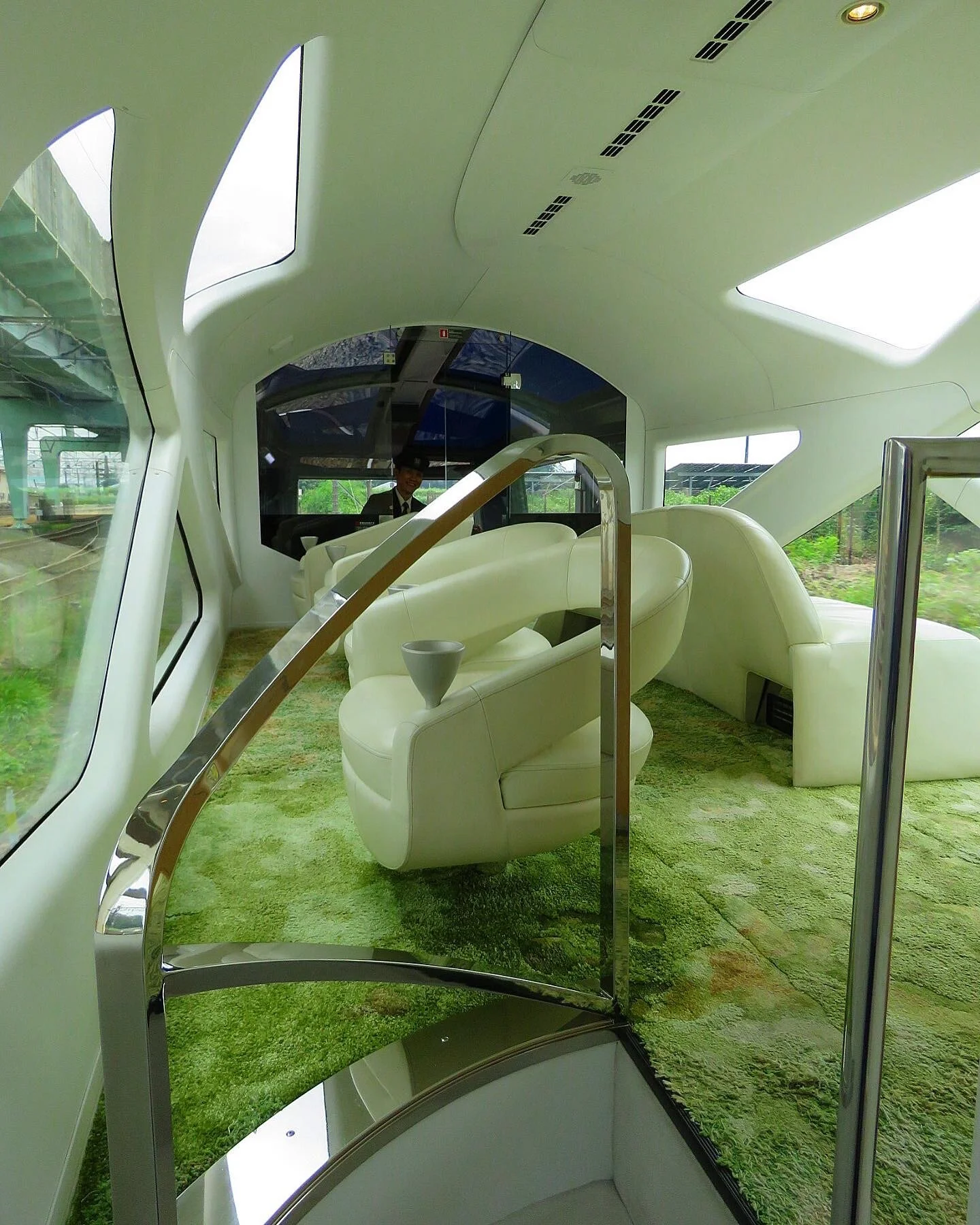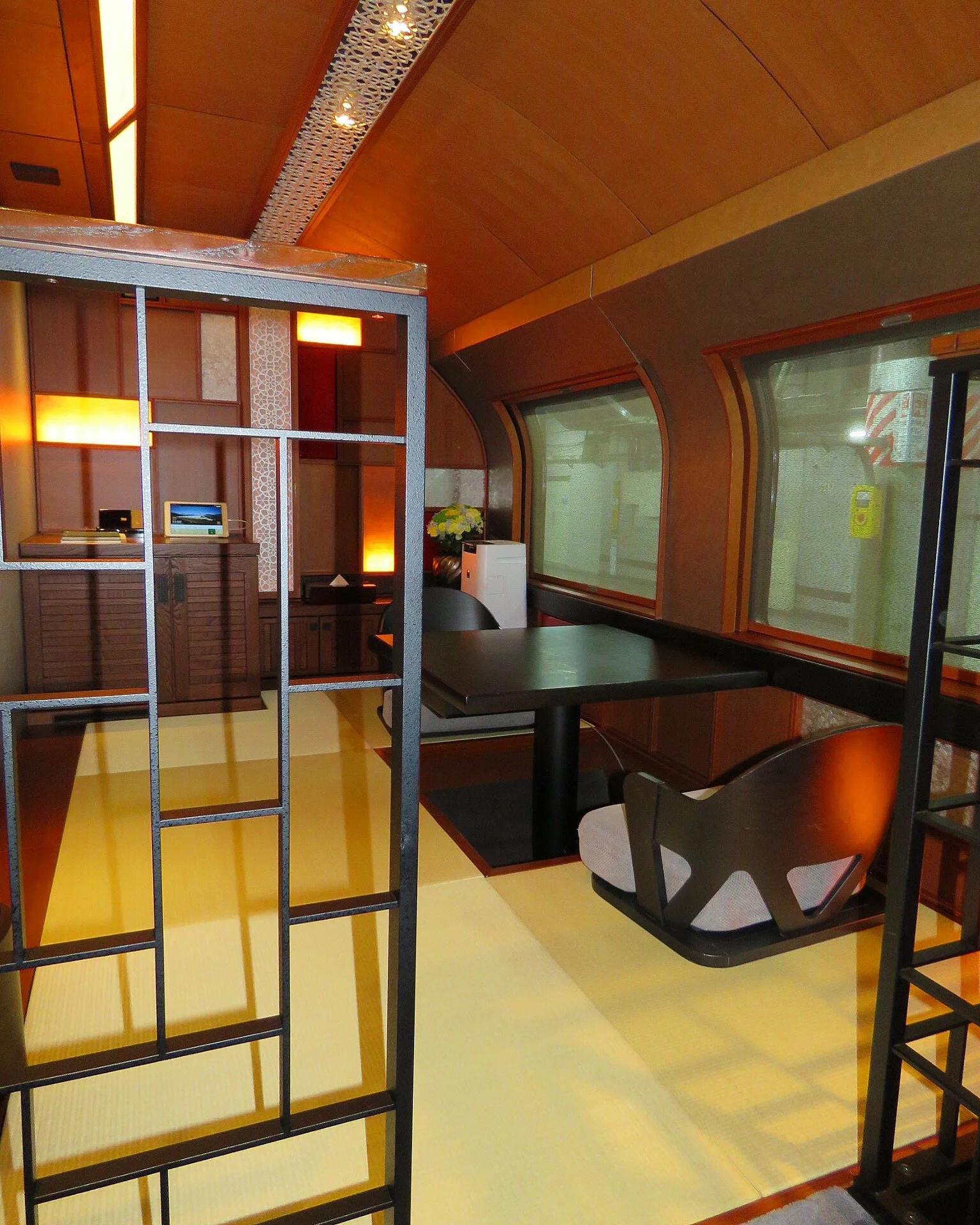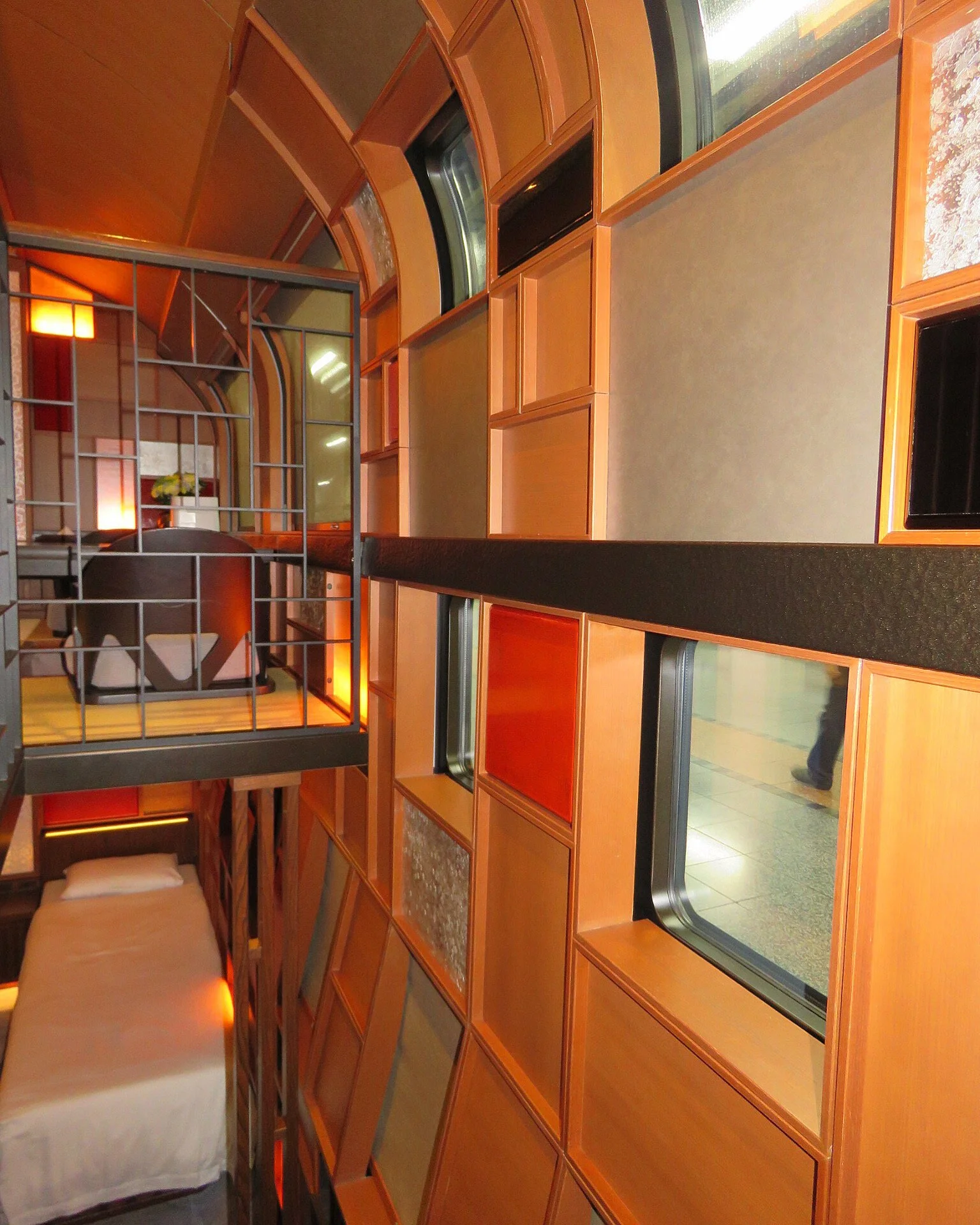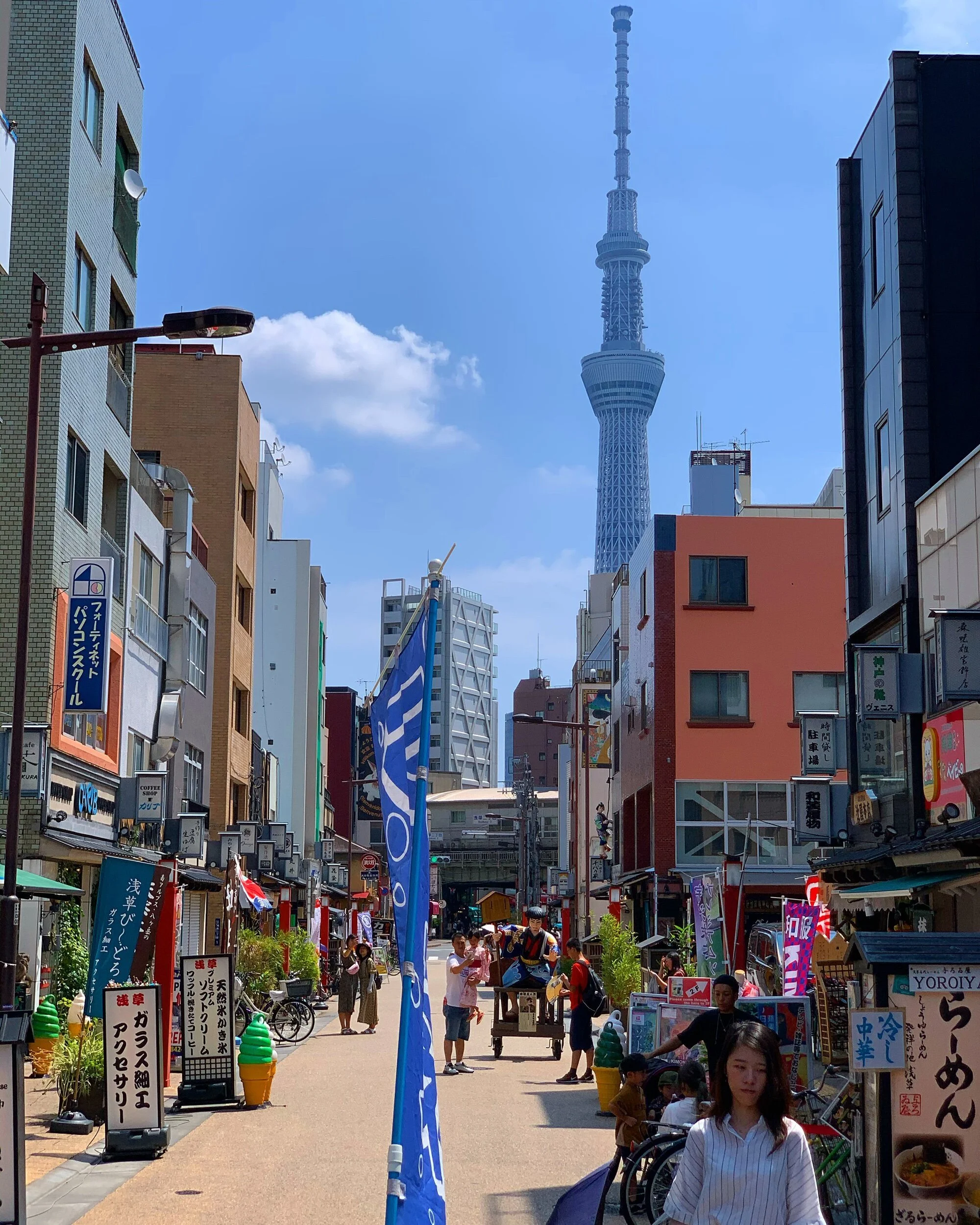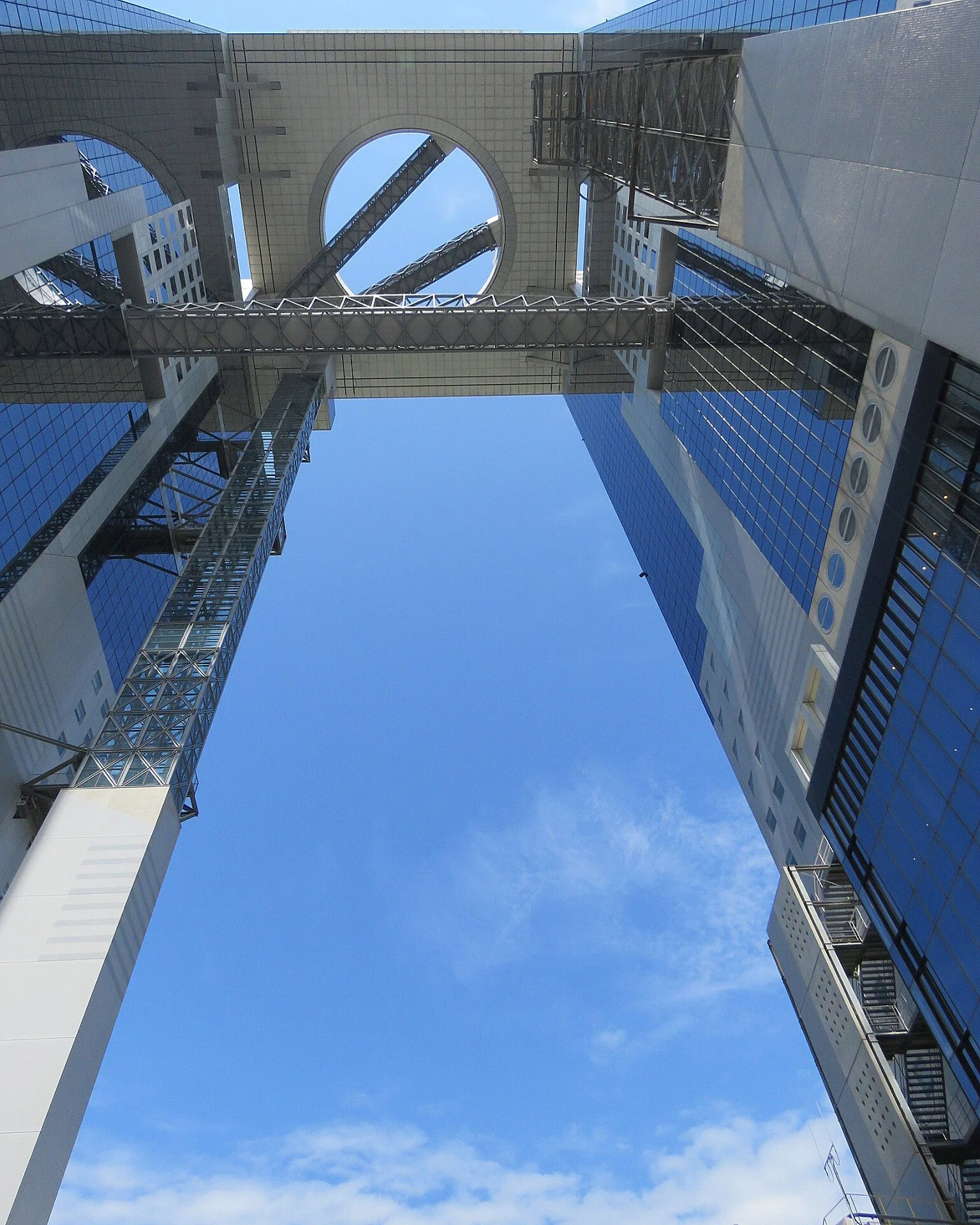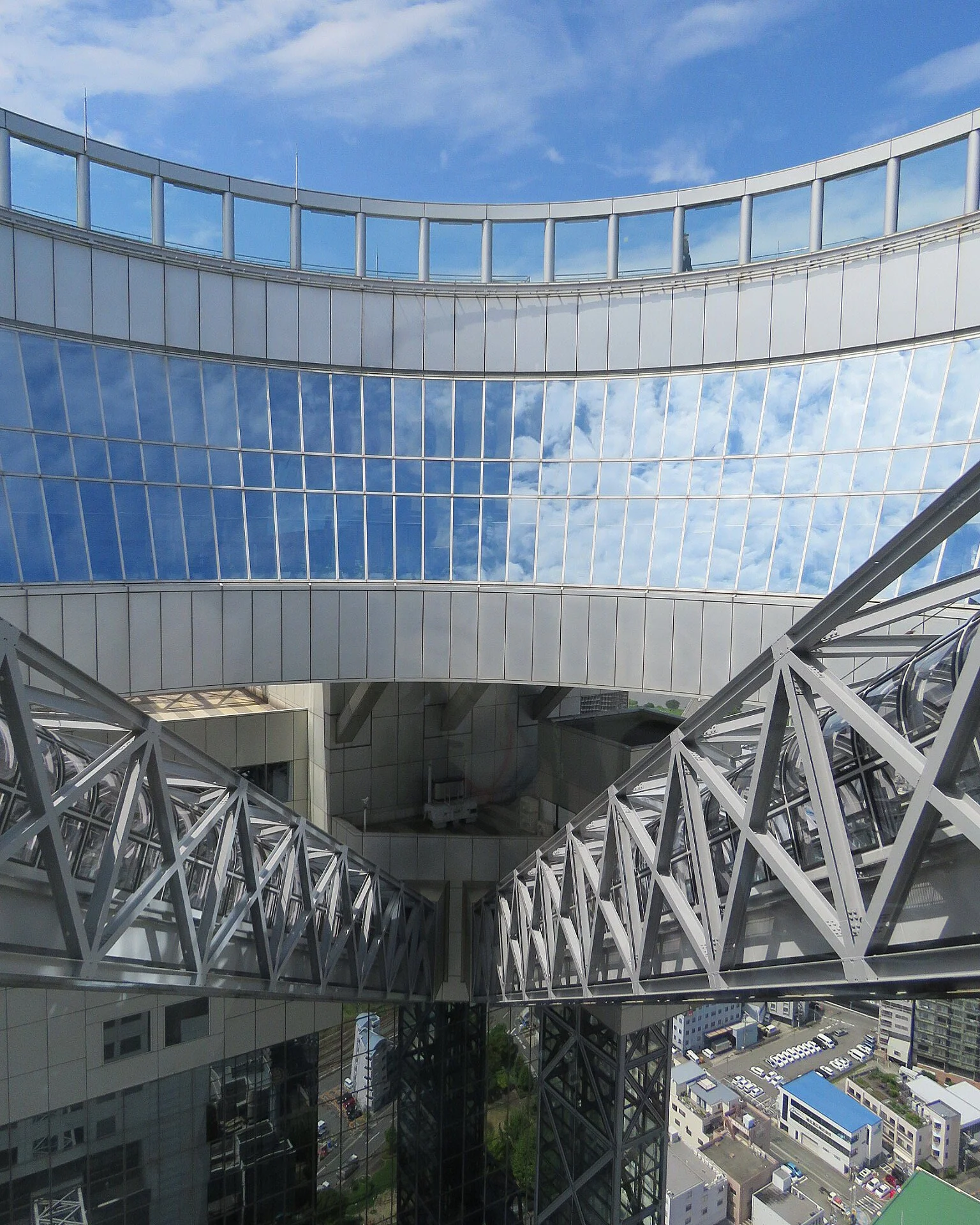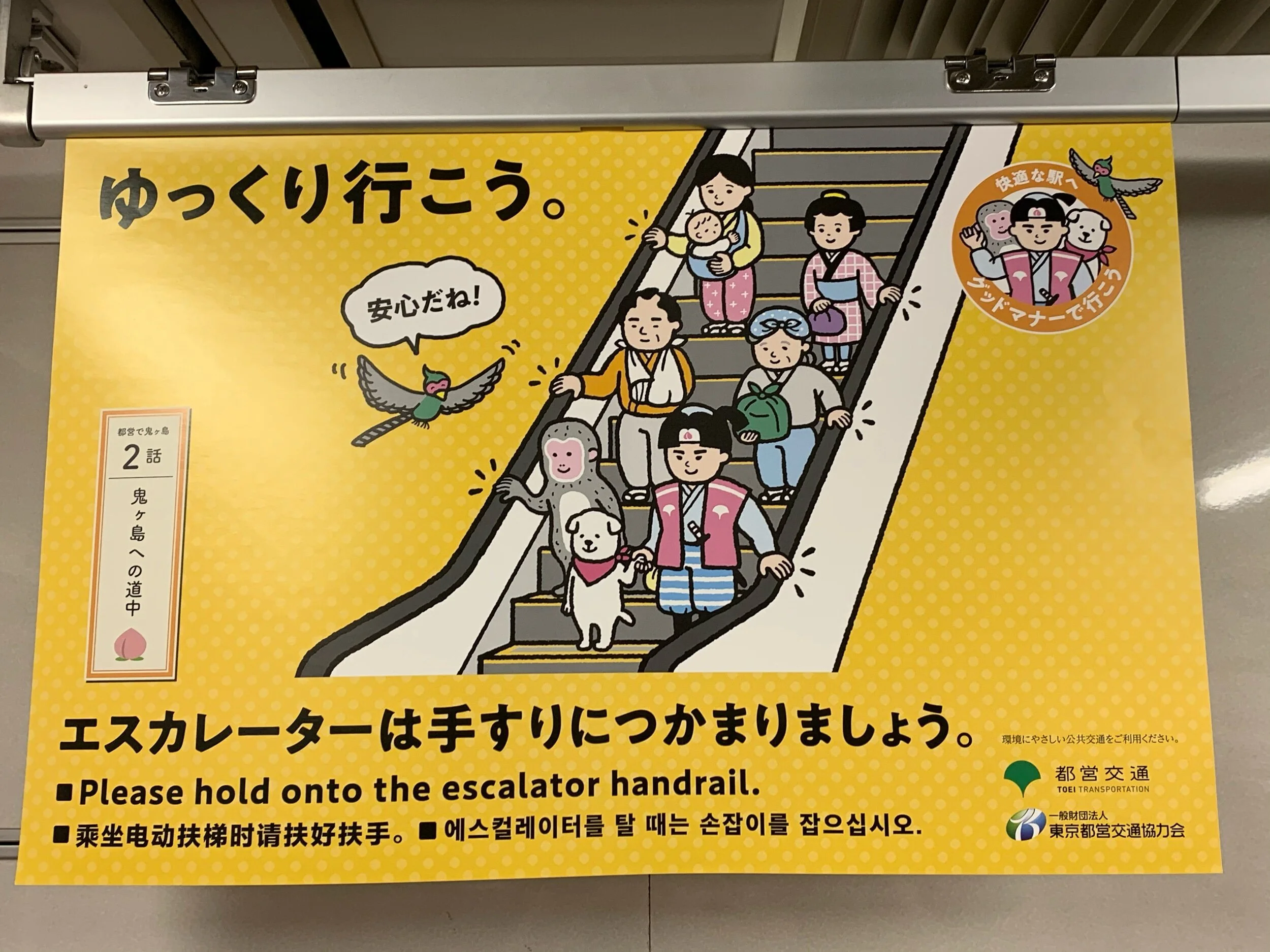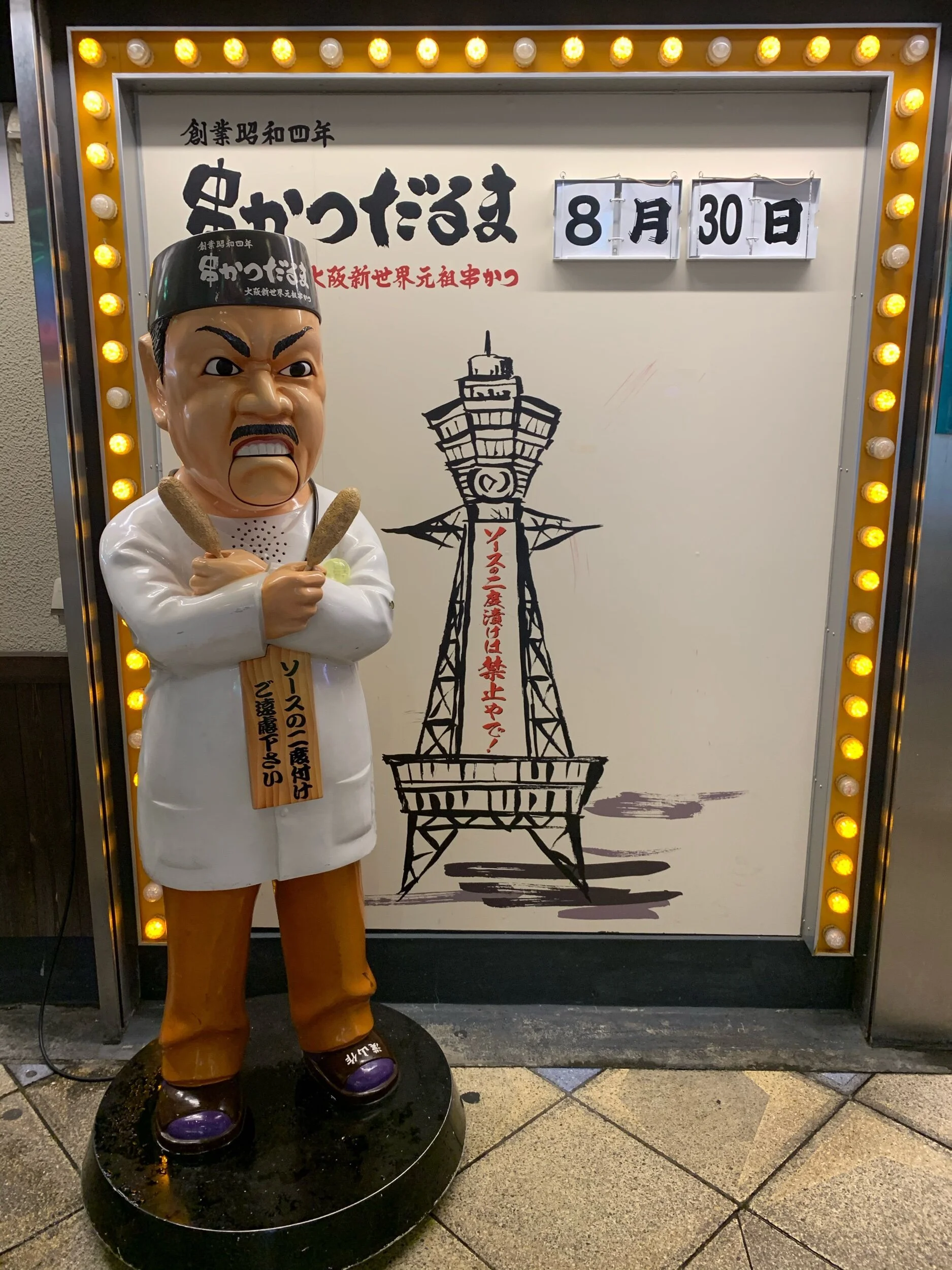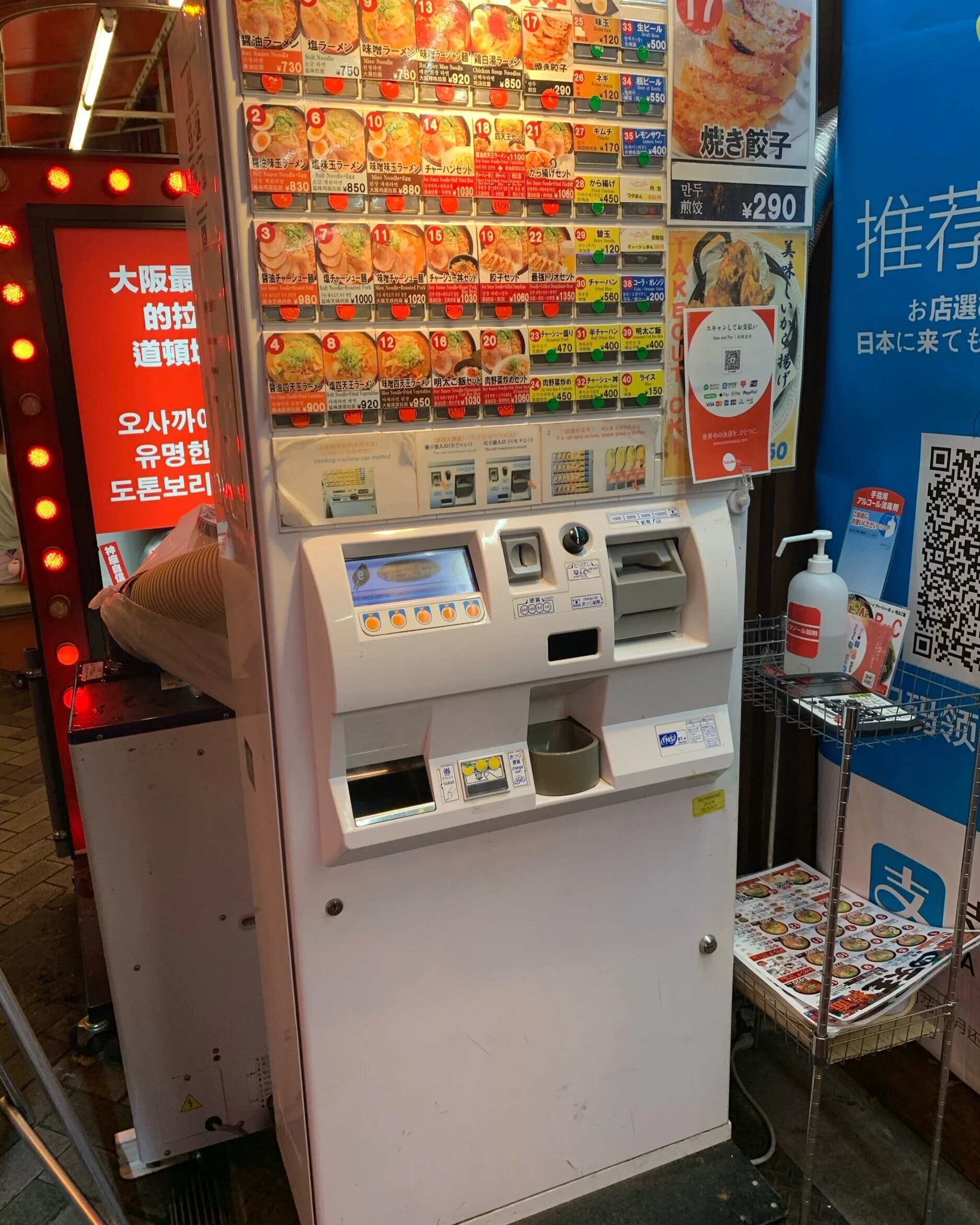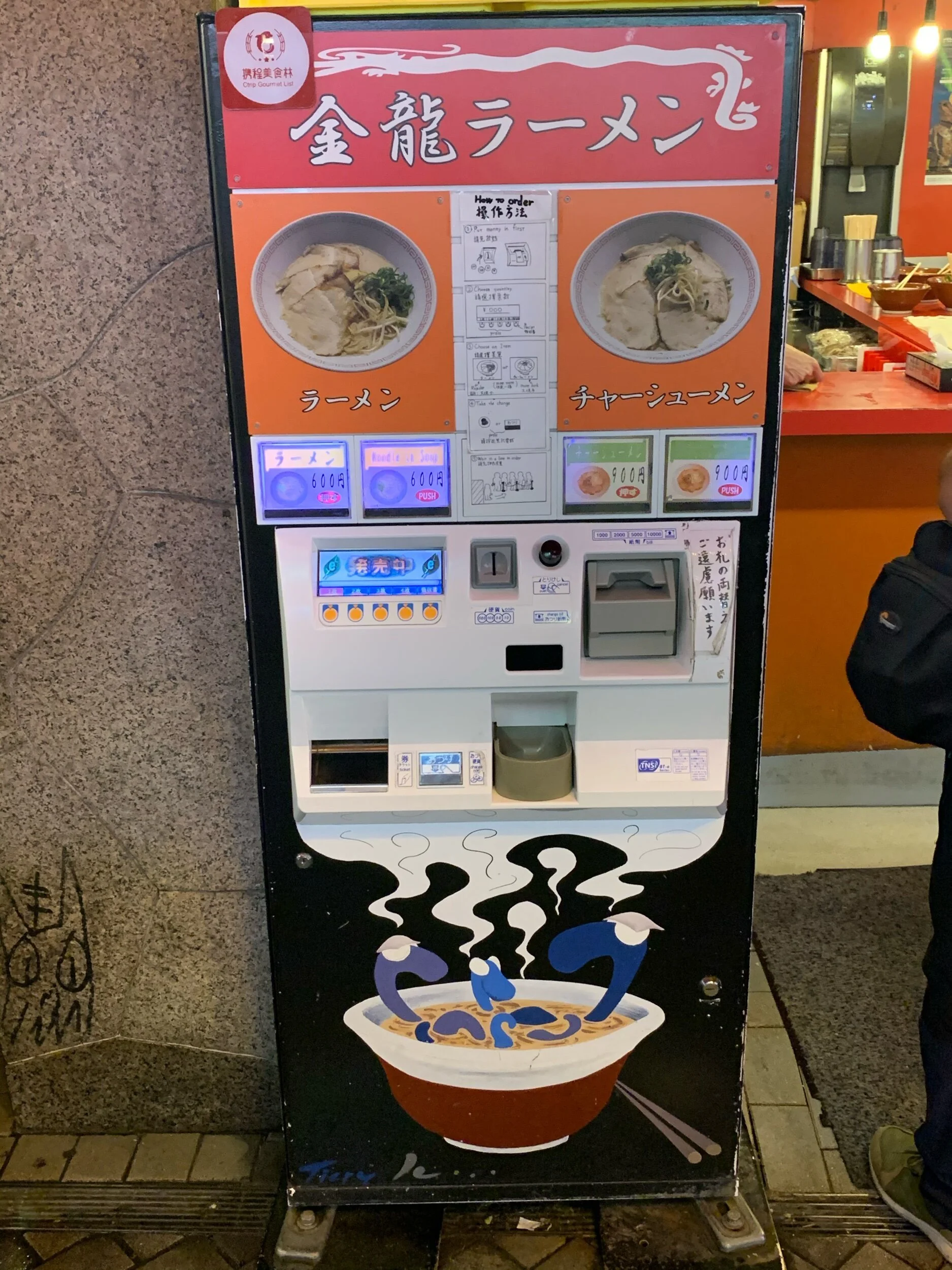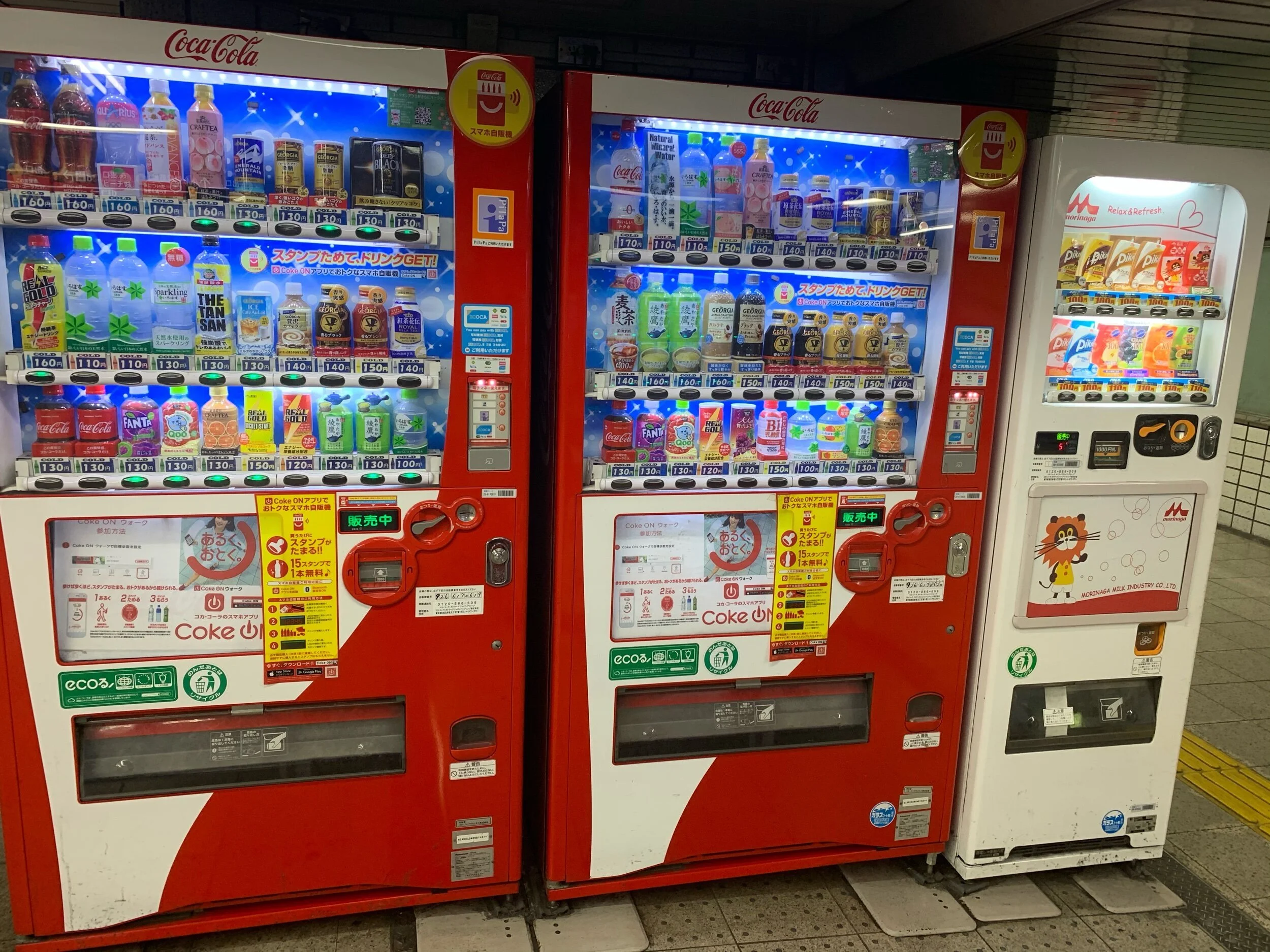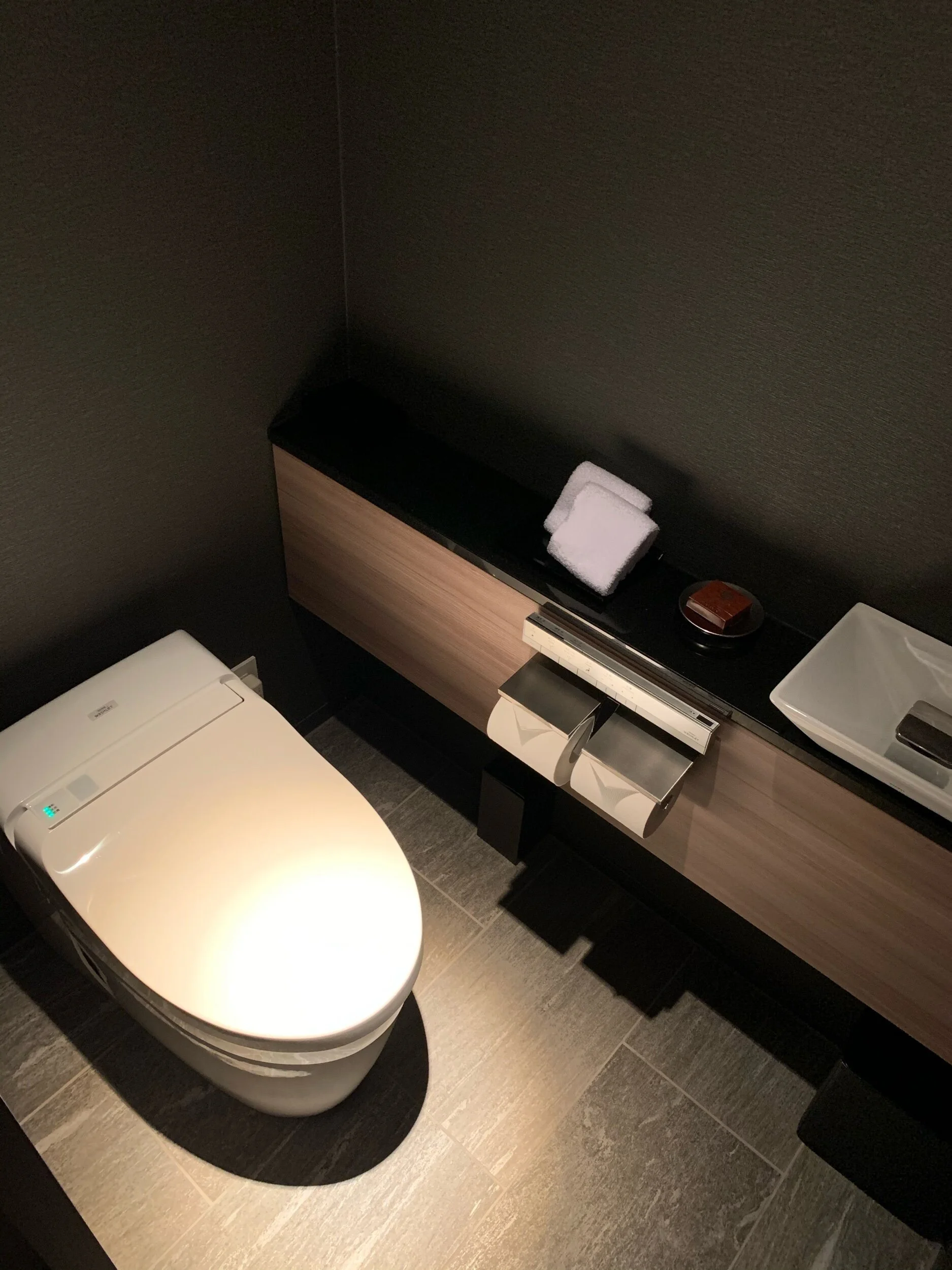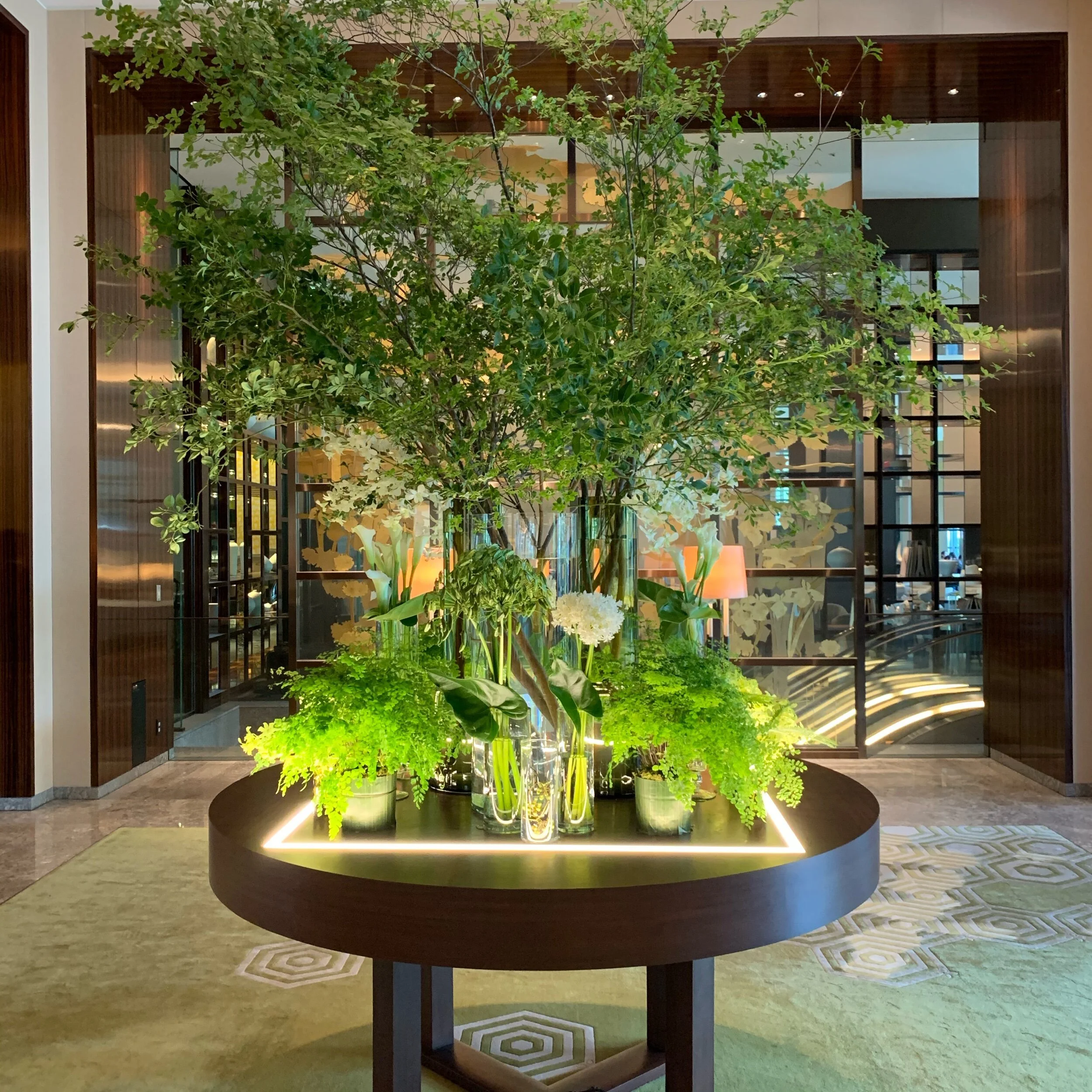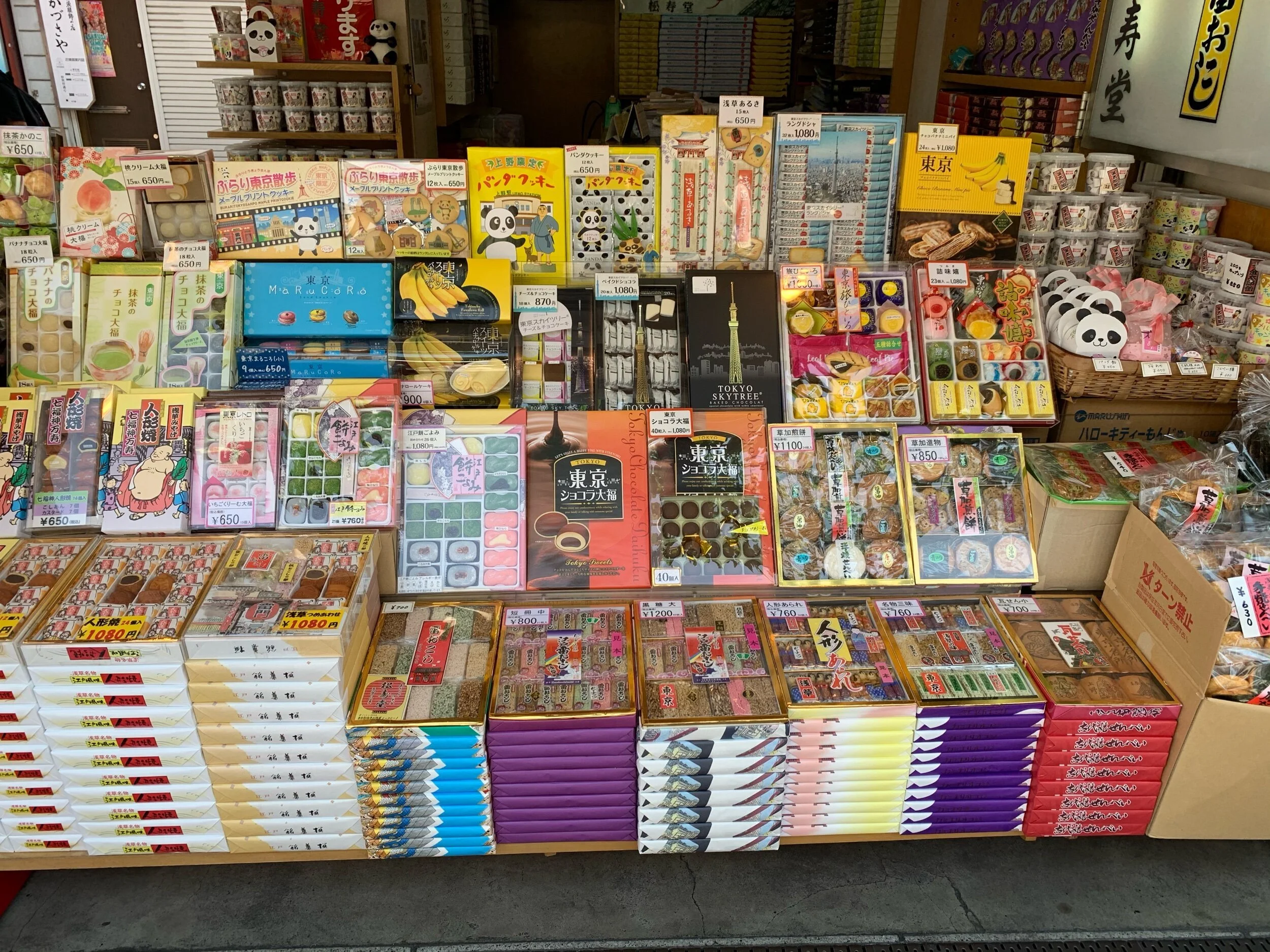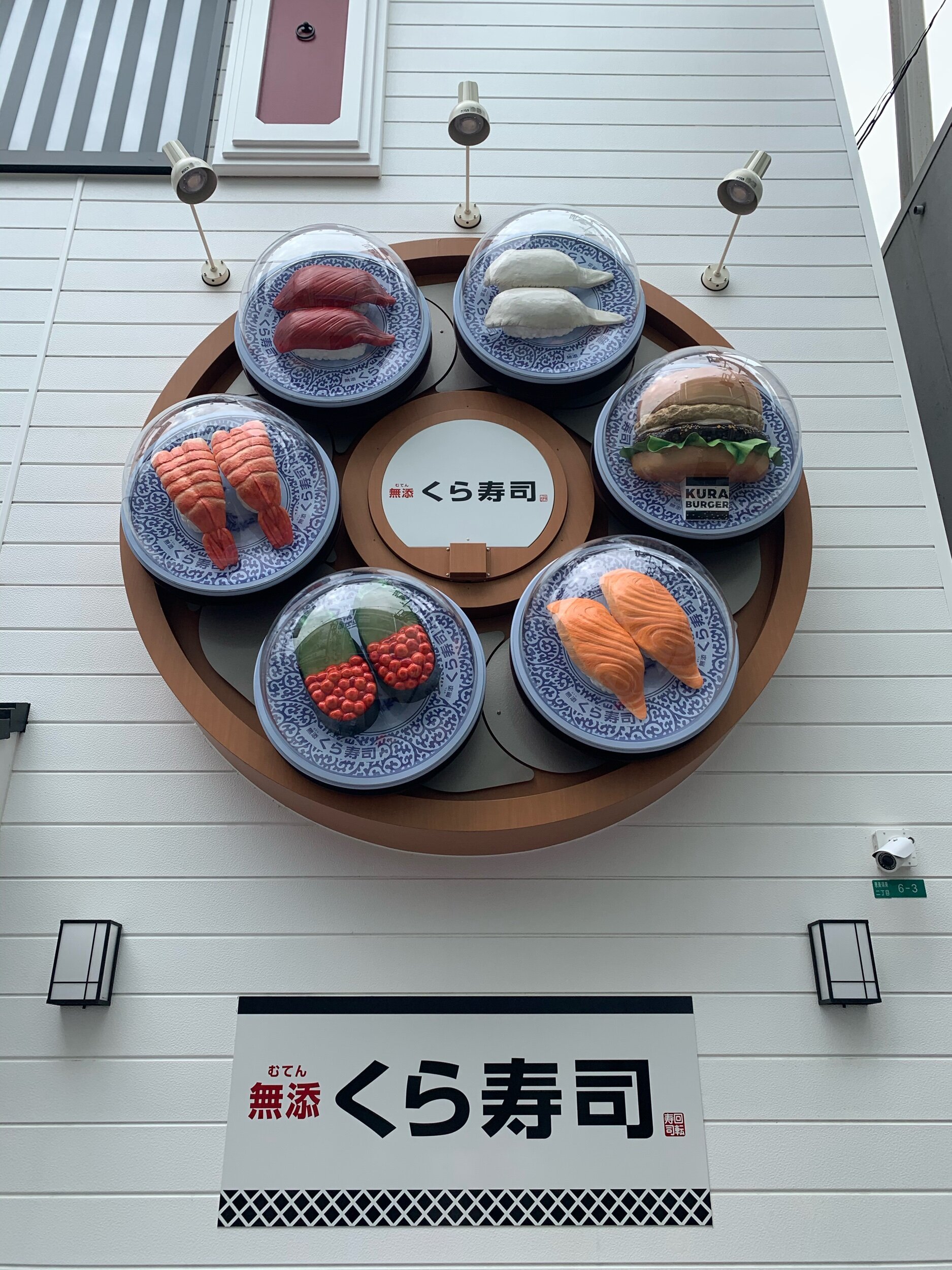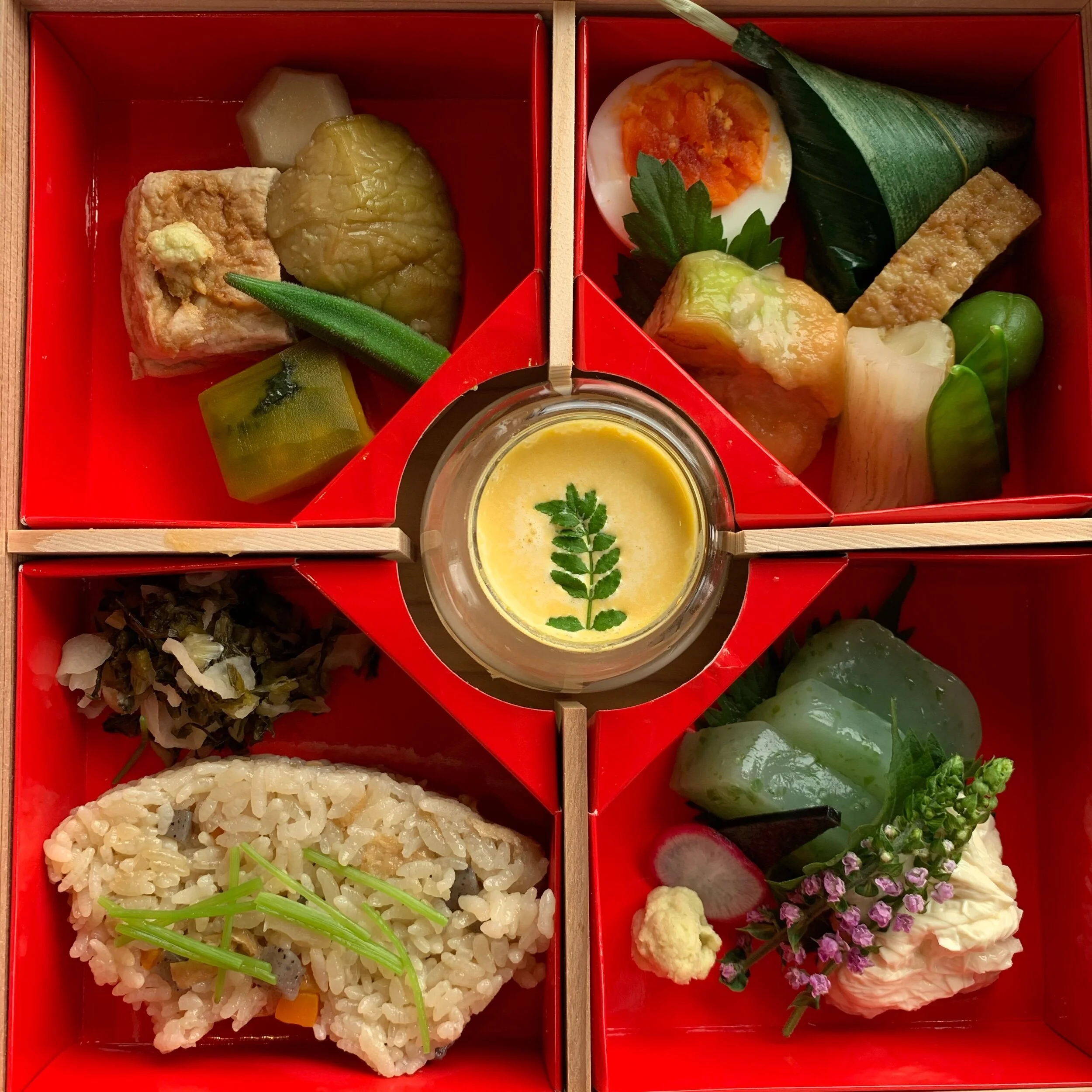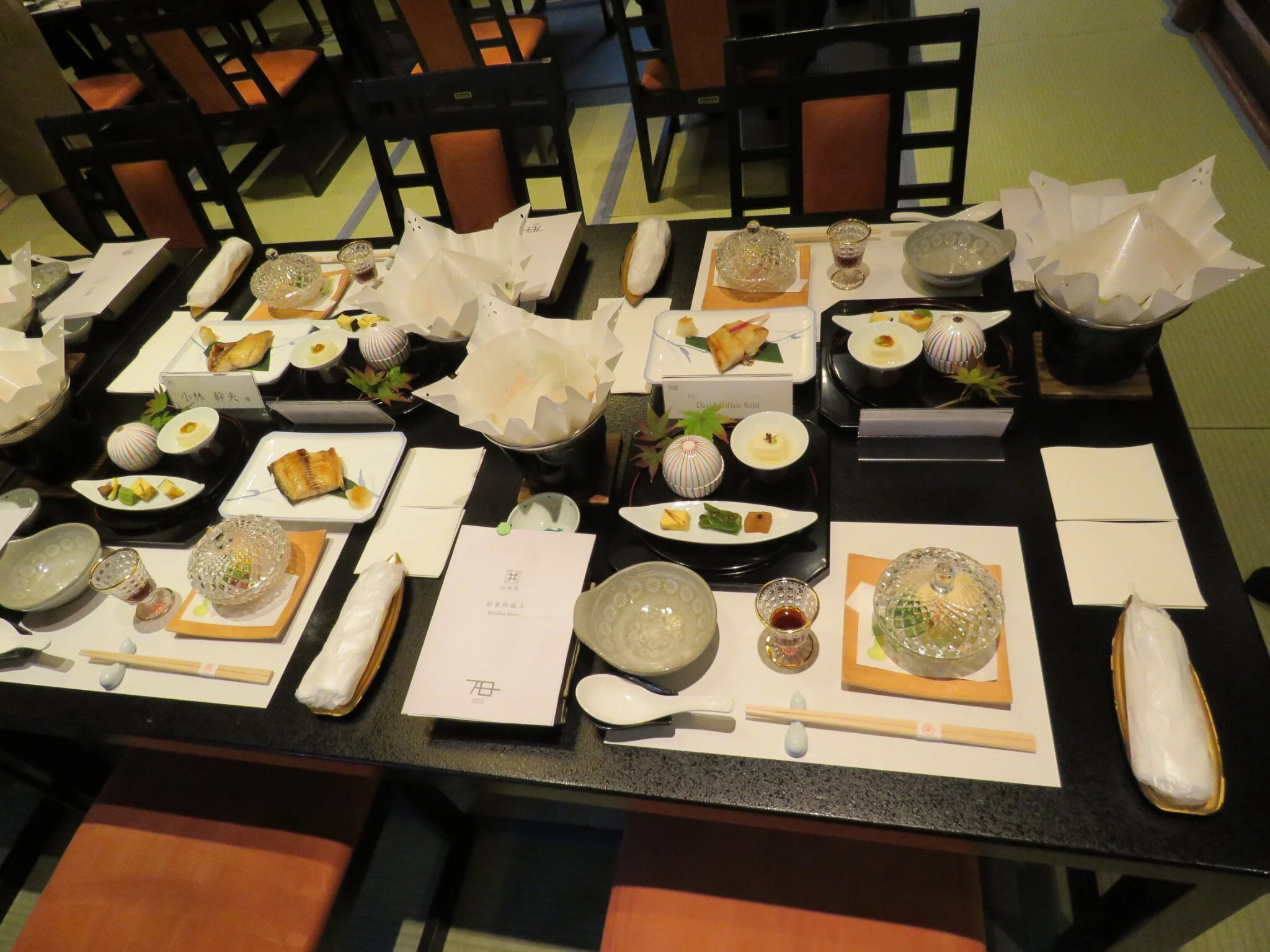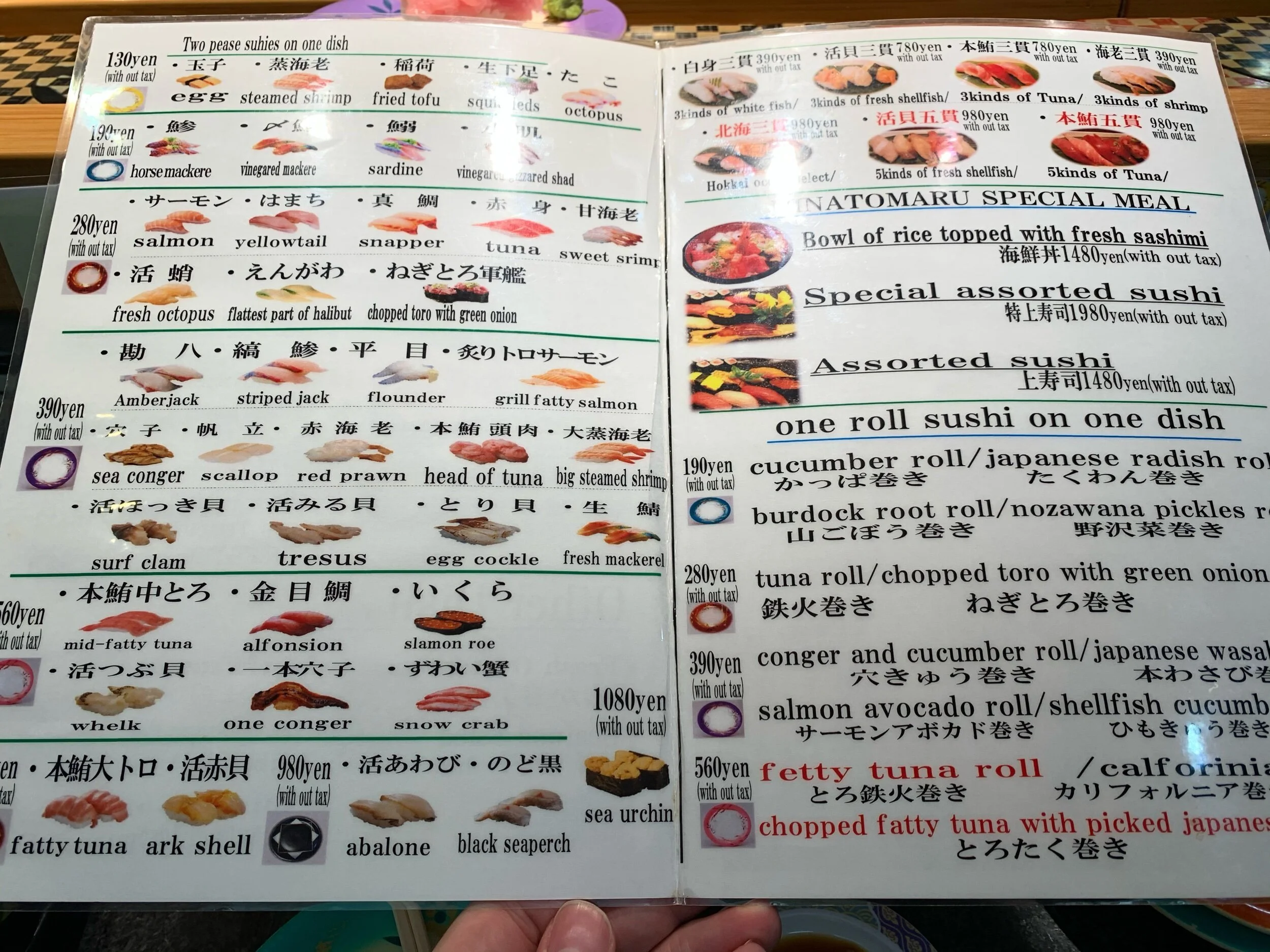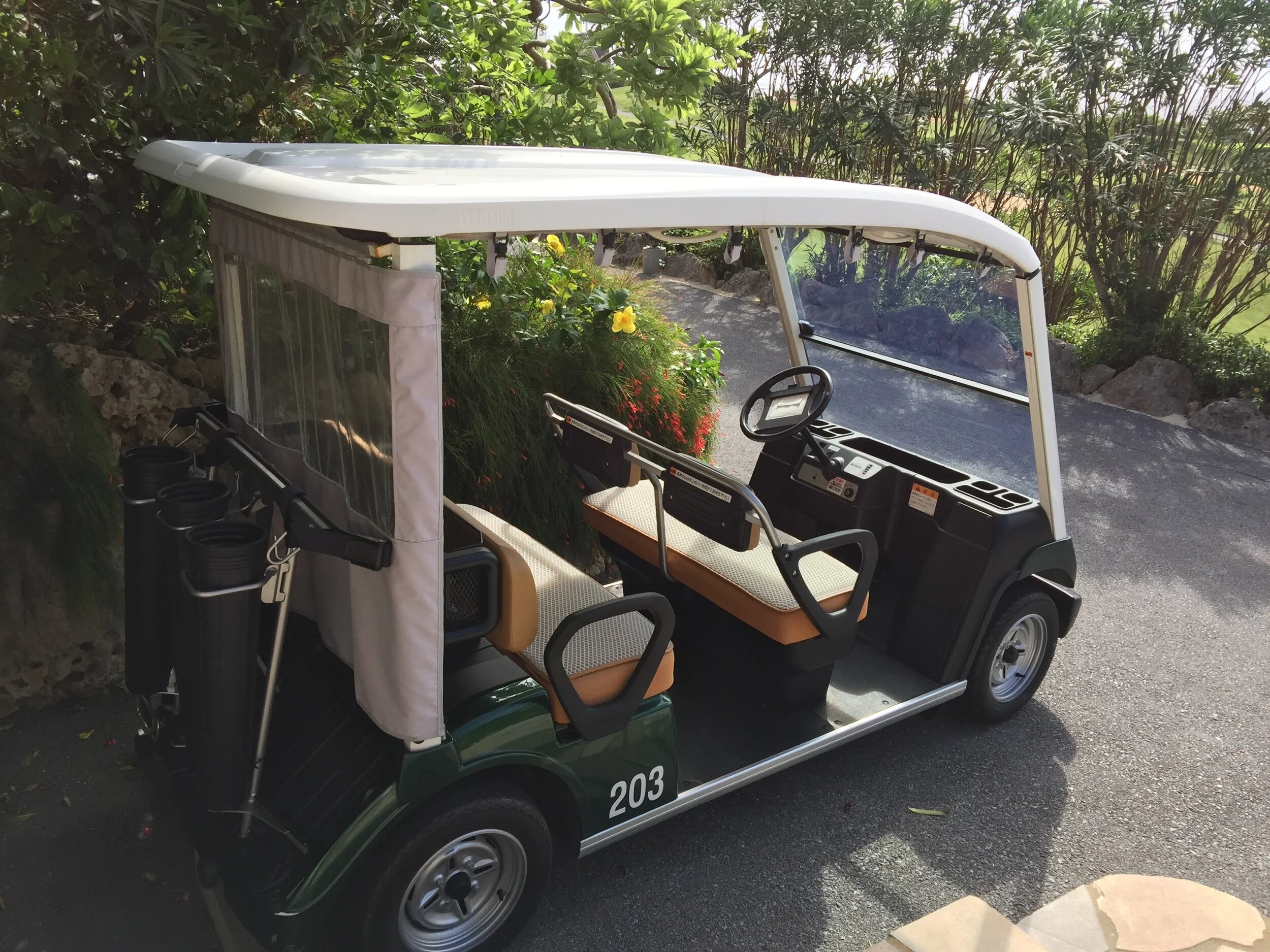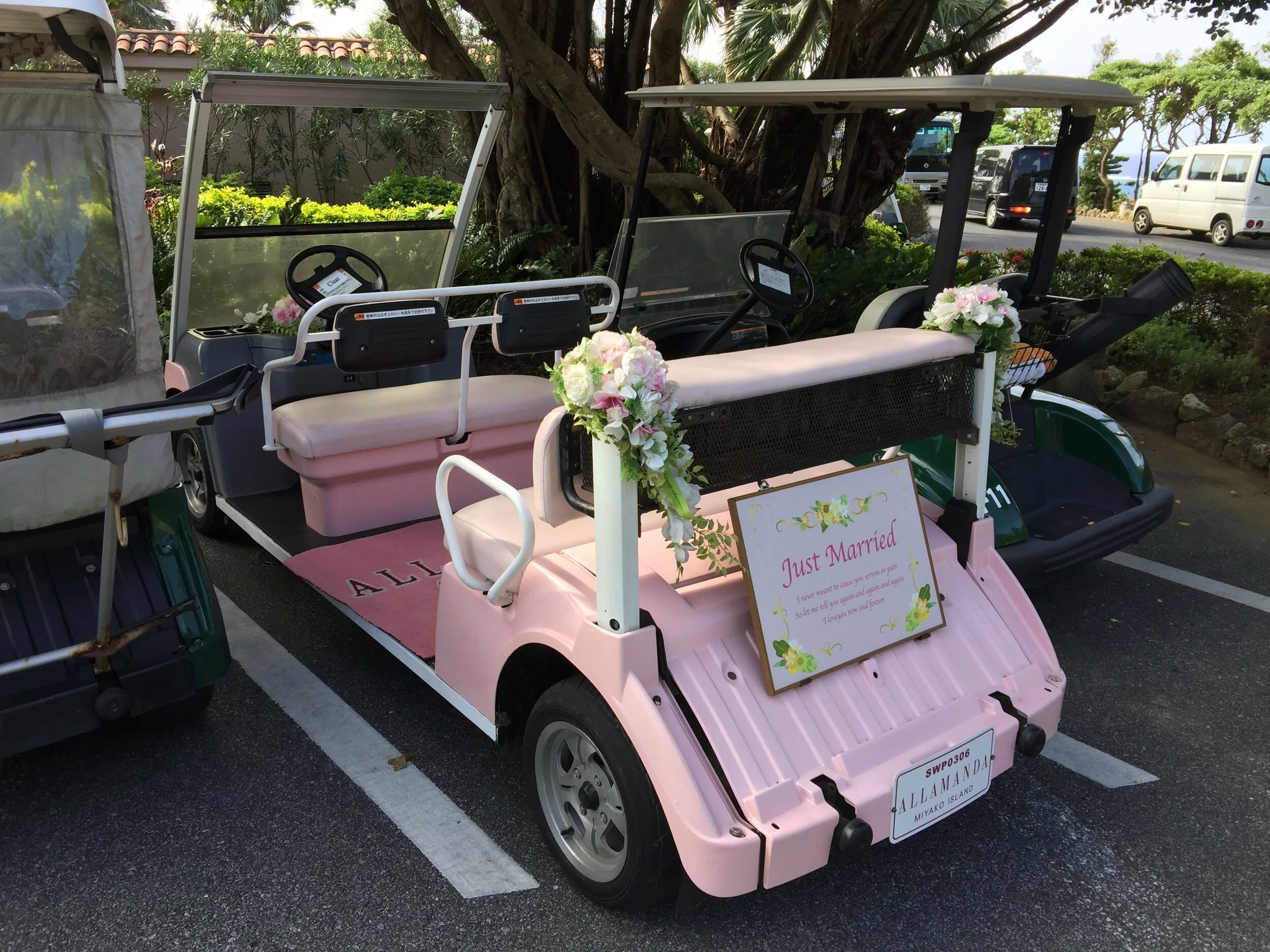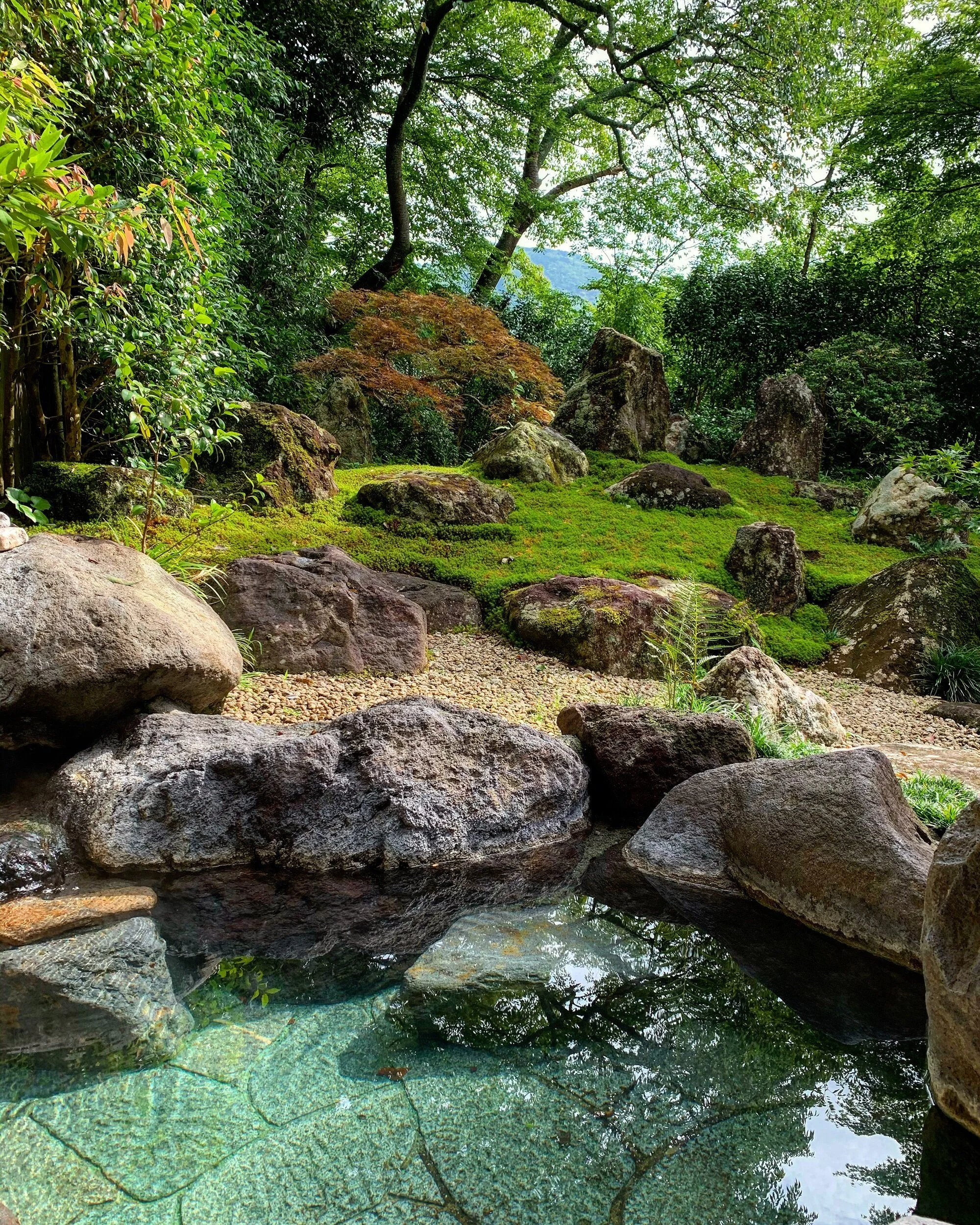Hidden Gems: Japan - An Insider's Alternative Top 10 Travel Picks
I’ve been to Japan twice now and loved both trips - there are so many things to do, see and experience with amazing, wonderful people. Other than the people, the sites and the incredible punctuality here are just some of my alternative top 10 reasons to visit. Upcoming are the Olympics in 2021 (deferred from this year because of Covid-19) and for Osaka, in particular, the Expo in 2025.
Japan’s city streets
The Top 10:
Respect / Tip-free Culture
Trains
Photo Opportunities
Self-service Machines
Technological Toilets
Cleanliness
Organisation
Animal Cafés
Food Presentation
Self-drive Golf Carts
Reason 1: Respect / Tip-free Culture
Always orderly on Japanese trains.
Everywhere you go the Japanese treat people with ultimate respect, foreigners and locals alike - there is lots of bowing and deference (sometimes feels a bit too much and can be uncomfortable) but the respect is clear for all to see. Whether it’s a hotel worker bowing to the lobby on entering, a train conductor bowing to each carriage on entering or leaving or a train cleaner bowing to the train on both getting onto the train and getting off it’s clear they respect people, values and objects. Respect also includes the fact that you won’t see Japanese people crossing a street without the lights being in their favour, or wearing masks - I used to think that was driven more by a desire to not catch germs, but apparently it’s more the case if anyone feels ill they don’t want to pass on their germs to other people. Covid-19 has brought a complete new meaning and realisation to this phenomenon.
So many masks to choose from
We have had such wonderful service in so many parts of Japan, from people trying to help where there are language differences or explaining some practice or process where we just don’t understand it. It can take quite a few days (coming from the tip for service culture almost everywhere else in the world) to begin to accept that any help or assistance is only being given as part of their job role or an inherent desire to assist and give good service. Tipping is frowned upon in Japan, people see this as an insult as opposed to the opposite (and the US is worse than the UK for this) where a service charge and tipping is not only welcomed or expected, but seen as a right; regardless of whether the service merits it or not.
It’s not a case of being mean, but when in Japan it’s such a lovely environment to not always be having to think about when to tip, who to tip, how much to tip and how often - exemplary helpful service seems to just come naturally and I think it’s a wonderful top 10 reason as to why to visit.
Reason 2: Trains
The majestic Train Suite Shiki-Shima
What can I say about trains - I’m not a trainspotter or train geek but there is something for everyone with Japanese trains, regardless of whether you like modern or historic. I’ve done bullet train journeys in the past (if they are due to leave at 10:21 they leave at 10:21; not 10:20 or 10:22 or later, but 10:21) but this time we also did a 4-day 3-night journey on the JR East Train Suite Shiki-Shima - you can read all about it in a blog post on my website. This modern train doesn’t go as fast as a bullet train (though I believe a lot of the speed is restricted not by the train but the tracks on which it uses) but it makes up for this in absolute modern-day luxury and technology. As well as the Train-Suite Shiki-Shima, which came into service just over two years ago, there is also the JR West equivalent the Twilight Express Mizukaze and there is also the Cruise Train “Seven Stars in Kyushu” which is a much more traditional service, looks more like the train ride we did in South Africa on Rovos Rail.
Bullet trains meeting in the station
When travelling on other services they are unbelievable punctual and again my point (1) above there is just absolute respect for these amazing engineering wonders. Trains are spotlessly clean (and watching cleaners going to a bullet train to clean between the brief turnaround time at a station is a spectacle in itself - you can check this out on my Instagram IGTV), the service is great (or check out my blog post reviewing the Nozomi service from Shin-Yokohama to Hakata) and there are so many frequent connecting services all over the country that travelling by train in Japan really is easy and convenient. There’s a choice of classes too - standard, Green Class which is the equivalent of a business class and (on some services only depending on the train company) Gran Class which is a first class.
Reason 3: Photo Opportunities
Tokyo Skytree in the background
Whether it’s modern skyscraper buildings, incredible trains, historic temples, bizarre signage and the array of neon in the big cities like Tokyo or Osaka, the geishas of Kyoto or the widespread use of cartoon characters in Japan is just an amazing country for photography and Instagram opportunities.
There are so many amazing temples throughout the country, we were lucky to see some incredible examples during our Train-Suite Shiki-Shima tour but even walking around districts of Tokyo or the historic part of Fukuoka we saw too many to list.
Japan is a dichotomous mix of old and new buildings - nowhere is this more apparent than in the big cities of Tokyo or Osaka, literally you can have historic buildings next to glass sky-scrapers - check out the Umeda Sky Building in Osaka as a spectacular example of the ultra-modern.
Mad signage - I thought Tokyo would be the main location for the best of the neon signage (like around Shinjuku and the Shibuya crossing) but Osaka takes the biscuit. Walking around the Dōtonbori and Tsūtenkaku districts it’s just a visual feast of new and old signage.
Reason 4: Self-service Machines
Order at the machine before going in
Whether it’s buying your rail tickets from a machine which, at the touch of a button, you convert to English or different languages (making it easy to find out where you’re going and how much to pay); restaurants where you select what you want to eat and drink in advance outside the door from a self-service machine and pay - you’re given a slip to get your food inside; or ordering food and drinks (or calling a waiter for the bill) from an iPad on your table; Japan seems to be at the leading edge of technology, not least from their toilets which I’ll come onto next! You also can’t go far without seeing spotlessly clean and perfectly serviced drinks machines, with everything from chilled water, green tea and hot coffees never mind the more unusual drinks like Pocari Sweat!
Reason 5: Technological Toilets
Toto toilet, Conrad Osaka
Pretty much everywhere you go, certainly all the hotels we stayed at including the Train Suite Shiki-Shima had the (what must be a monopoly) Toto Washlet toilet with Neorest seat. Even high-end malls and many public buildings also have them - not only will they do everything from raise and lower at the touch of a button, illuminate or disinfect the bowl, clean, spray and massage your private areas, they also invariably have heated seats and numerous flush options including (on the Shiki-Shima) a sound option which disguised any “disagreeable” bowel noises).
So many options to choose from
The Toto toilet has obviously been around for a long time and I can honestly say I had no intention of photographing even one until I started writing this blog post quite late into our most recent trip), but they do obviously vary in terms of age, design and functionality. I did not keep a running track of special functional comparison (and the photo below was taken in the Conrad Osaka which was our last stop (and after I started writing this). The out and out winner of this trip probably has to go to Zaborin, where not only did they have one but two absolute top-end toilets in the suite - the seat went up automatically as soon as you approached and immediately disinfected and illuminated the bowl, but the Train Suite Shiki-Shima gets special recommendation for having the most functional toilet, especially on a train; and highly commended too to the Palace Hotel in Tokyo. Though still having all the functionality, Gora Kadan probably has to come last in these stakes, for having a bizarre cream/beige colour rather than the more traditional pure white models, probably a sign of age from when the bathrooms were fitted out.
Reason 6: Cleanliness
Exceptional cleanliness everywhere you go
Almost everywhere you go in Japan things are spotlessly clean, streets free of rubbish, perfect toilets etc. but one thing that is quite unusual is often a lack of hand towels or hand dryers in toilets or napkins in some restaurants. On the bullet train, as an example, you will usually find two toilets - one is unisex which a fully closable, lockable door (with no window) but you’ll invariably find there is a separate male toilet with a urinal only and, rather bizarrely, a glass window in the door. While in the unisex toilet you will find toilet seat covers, buttons to lift and lower the seat without touching it, etc. what you won’t find is a hand-towel or a dryer! It seems to be the culture in Japan that people take their own towels everywhere, in gift shops in all areas you will see an array of small towels for sale, often with the most incredible designs. In very modern conveniences you will however see some hand-dryers and copious amounts of towels in hotels.
Reason 7: Organisation
Everything is perfectly organised in Japan
We had quite a complex trip this time, the main reason we came was because we had won a place on the Train Suite Shiki-Shima. I love organisation though and it’s so easy to find information about things in Japan, people are so helpful and when you get information, you really get information! After we had the 4-day train trip, we were travelling onto Gora Kadan in Hakone National Park. JR East, the train company that operates the Train Suite Shiki-Shima organised our bullet train tickets for us (as hard to do in the UK) and we had so much interaction by email (which was fantastic) until we got the plans right (just not right, 110% spot on). We were then travelling onto Gora station from Odawara and these mountain trains are included with a Hakone Free Pass ticket - not only did they (JR East) give all the information related to this, they also sent a video and web link with step by step instructions as to how to buy this pass, the route to take from the incoming train to the machine to buy from, and giving the hours of the customer service desk which would have already closed by the time we got there.
In terms of food requirements or transport arrangements generally for the train or hotels, communications were again so detailed but only with the aim of making sure everything was so right for us, and it was so appreciated!
Reason 8: Animal Cafés
Dog Café, Asakusa, Tokyo
I haven’t researched these in detail but I can’t help but imagine that there will be so many negative views of these online too with criticism from animal lovers. I’d heard about cat cafés before, but being more of a dog lover I’d never paid that much attention on the previous trip. This time, when in Tokyo (for the third time) we went to the Senso-ji shrine on a Sunday - walking through the covered shopping streets after visiting the shrine we came across the Asakusa Mameshiba Café, a two minute walk from the Nakamise Shopping Street (Orange Street). It was really clear outside for instructions as to how to get a ticket, the time was showing as to when the next free entry slot was - we immediately got our tickets and went back in time for our slot.
One of the very well cared for dogs
The Shiba dogs probably weren’t as friendly as I had expected, but they were probably fed up with the constant stream of tourists coming in, ooohing and aaaaahing, expecting them to be all over them. While all the dogs were clearly extremely well cared for and the café was absolutely spotlessly clean (if any dog did wee there was immediately a clean-up party despatched to the spot), and there were clearly defined private areas where the dogs could go to get away from people if they wanted, I would say for me the jury is out on these. After going to that café and knowing about the various cat ones in Tokyo, we then also saw an owl one in Fukuoka. I think the phrase is probably “Only in Japan!”
Thought we had seen it all before……………
While they are called cafés, the one we visited really was more for dog petting and photo opportunities as opposed to a proper café - there was a section at the back (with appropriate dog sized step-over gates to stop them going in) with a tea and coffee machine from where you could select your own choice of beverage) but that was it, no choice of food etc.or that could have maybe been a whole different experience with the dogs. They’re really definitely just a place where you can get up close to the animals and, depending on their mood, some level of interaction.
Reason 9: Food Presentation
Marathon 9-course meal at Zaborin Ryokan
While the taste sometimes isn’t what you expect, or you pick something from a picture or a plastic food make-up and get a mystery ingredient not shown or listed (if you’re lucky enough to get an English translation) - like meat for a vegetarian in with pasta and tomato sauce; there is no doubt that Japan gets 10 out of 10 for presentation. This is in terms of design, creativity, colourfulness and just the whole ceremonial process of serving you. I really don’t normally photograph meals or food, nor post them on Instagram, however on this most recent Japan trip I’ve done both. While both meals were a bit of a marathon and sometimes a bit hard to get used to the taste and textures (but still trying very hard to not offend by leaving lots), there were two 9-course dinner menus that really stood out - one at Zaborin and the other at Gora Kadan.
Reason 10: Self-drive Golf Carts
Private villa transport
Many hotels use electric golf carts to transport you around their hotels and resorts, but only twice have I been actually able to drive these myself. The first time was on Sentosa Island (off Singapore) many years ago where you could rent them by the hour and the second was when we went to stay at the Shigira Bayside Suite Allamanda on Mijako-hima Island. We had a villa at the resort which came with its own golf buggy to transport yourself around the resort - this was quite large and spread out over a big area, you could drive to different restaurants, the beach, the main onsen down by the water etc.
The less subtle honeymoon buggy
It was so easy to drive and follow the maps and signs, the absolute highlight one day was when I drove it to the main building for a spa treatment. There were parking spaces marked for the buggies to park near the entrance, I drove it into one, thinking I would reverse on the way out. Lo and behold, after my (amazing & relaxing) spa treatment I came out to find that one of the hotel staff had reversed the buggy into the space so it was ready for me to drive straight out - what service! We were quite glad though this wasn’t our honeymoon so we didn’t get the special buggy!
Reason 11: Onsen
Absolutely incredible Zaborin Ryokan
A cheeky number 11 has also to be the onsen or bathing culture in Japan. Whether this is a public onsen - look out for the blue or red curtain to indicate which side is male and female, and watch they often swap sides to give a different experience or if only one area, they have male and female days/times. Alternatively it’s amazing having your own private inside or outside hot spring-fed bathing tub.
Private onsen pool at Gora Kadan, Hakone
The likes of Gora Kadan traditional ryokan where we stayed had both a private rock pool in our garden as well as a larger shared onsen in the hotel; the contemporary Zaborin where each suite has both a hot spring tub both in your luxury slate-lined bathroom as well as a wooden soaking tub on the private balcony; or the super-sleek Evian Spa in the Palace Hotel Tokyo. It’s very important to understand the etiquette of public onsen bathing - this is not a definitive list but remember to wash thoroughly at the showers before going into main bathing pool (there is a stool and bucket to use so that you don’t splash the person next to you), don’t wear anything (unless it is a shared bathing pool) and make sure the small washcloths that are provided do not touch the bathing water. If you’ve tattoos you must make sure these are covered up - if you have them, take some specific advice as there are usually signs in public onsen advising no tattoos!
Useful weblinks:
Train companies:
Hotel websites:
Hotel reviews by The Private Traveller:
Other:




